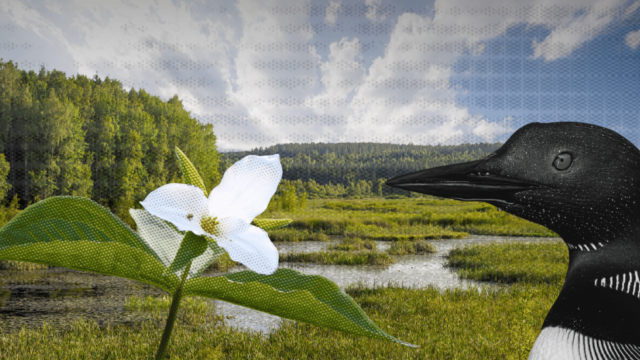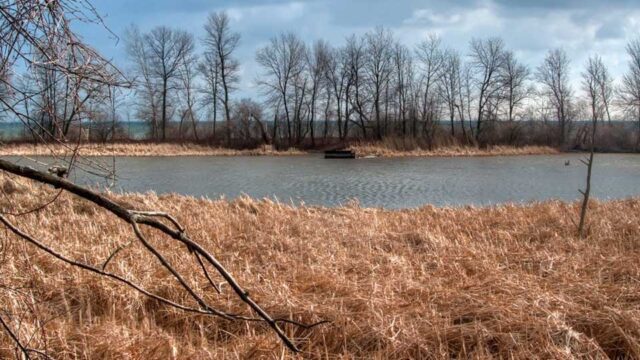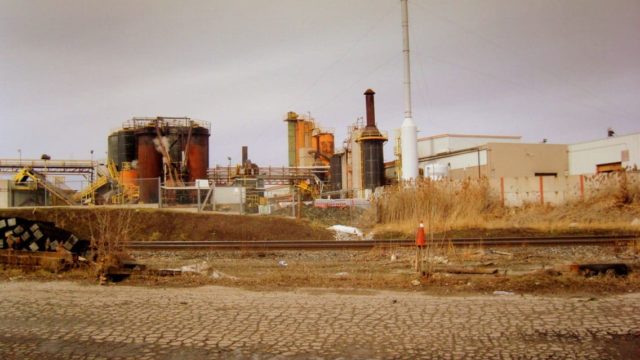Developing the Greenbelt is not the answer to the housing crisis
This month, Ontario’s Auditor General released a damning report into the Ford government’s decision to remove 15 parcels of land from the province’s Greenbelt for development. [1]
Ontario’s Greenbelt is a unique area of protected land comprised of farmland, forests, wetlands, rivers, and lakes. It was created in 2005 to prevent further loss of farmland and natural heritage and to restrict urban sprawl.
The 93-page report found that Premier Ford and Minister Steve Clark used a flawed and biased process that enriched a small group of insider developers. These developers stand to make $8.2 billion. This is because the government removed 7,400 acres of environmentally sensitive land from the Greenbelt.
This outraged Ontarians. This government played favourites with a small number of politically connected developers. At the same time, they steamrolled important environmental protections.
But Premier Ford and Minister Clark were quick to fight back. They cited immigration levels as the reason why they had no choice but to develop Greenbelt land for housing.
Ontario needs homes and it needs immigrants
I am one of 1.3 million immigrants who settled in Canada since 2016. This is a figure that has broken all previous immigration records. [2] A significant proportion of immigrants like me moved to the Greater Toronto Area.
The Ontario government wants to rip apart environmental protections in the province and pave over the Greenbelt. And they want to do it in the name of immigrants like me. But is immigration the real reason why the Greenbelt has been opened up for development?
Ontario — and Canada as a whole — needs immigrants. It has an aging population and actively encourages immigrants to come here. It wants us to bring our skills, experience, and our ideas.
To attract immigrants, governments in Canada advertise employment opportunities and higher living standards. But they also promote the country as a place of unrivalled natural beauty. This is somewhere that values nature and wild spaces.
At the same time, the provincial government’s policies are destroying nature in Ontario. They are using immigration as the wedge to divide Ontarians and dismantle environmental protections.
The Greenbelt is not the answer to housing
The government doesn’t have to destroy the Greenbelt to house people in Ontario. Its destruction is not needed for people expected to migrate to the province in the coming years and decades. Unlike what Premier Ford claims, it is not a dilemma — we can build homes and protect the environment at the same time.
There is no denying that a housing crisis impacts people across Ontario. People from all communities feel its impact, but it is especially hard for those in vulnerable situations. In Toronto, where I live, there has been a significant increase in people experiencing homelessness. The housing crisis has exacerbated this.
Matti Siemiatycki is the director of University of Toronto’s Infrastructure Institute. He told the Toronto Star, “There are many reasons why we are not meeting our housing targets, but the availability of land is not at the top of that list.” [3]
A report from the province’s Housing Affordability Task Force found that there was enough existing land available to meet Ontario’s housing needs. The Auditor General also highlighted this in their report. It also stated that the Greenbelt and other environmentally sensitive areas should be protected. [4]
Indigenous rights must be respected
One of the most important things I have learned since I immigrated to Canada is its relationship with Indigenous Peoples. The ongoing impact of colonization seeps through every aspect of Canadian society.
The Greenbelt is the traditional territory of many Indigenous Peoples. The Ontario government has failed in its duty to consult with them before opening it up for development.
Greenbelt land, such as Duffins Rouge Agricultural Preserve, is important to 10 First Nations communities. They have a historic, cultural, and present-day connection to the Rouge Valley. Development at Duffins Rouge could impact Indigenous harvesting rights protected by the United Nations Declaration on the Rights of Indigenous Peoples, their Aboriginal and Treaty rights, and the duty to consult.
Sprawl creates many problems
The truth is that developing the Greenbelt would encourage sprawl. Homes built on this land would likely be large, unaffordable, and unsustainable. This land is woodlands, wetlands, or used for agriculture. This means that not only would houses have to be built, but also electricity, sewage and other infrastructure. These houses would most likely be car-centric.
These are not the kind of homes that immigrants need. They most likely would be unaffordable for many immigrants who have arrived or are yet to arrive in Ontario. In addition, urban sprawl can often create social isolation.
From firsthand experience, I know the importance of community as a support mechanism for immigrants. Many arriving have few friends or family here and rely heavily on a shared sense of community to help settle and become established. Urban sprawl rips apart the fabric of such communities.
This is a political agenda
This Ontario government has been determined to run roughshod over environmental protections in Ontario since first elected in 2018. It has ripped up longstanding policies and laws for the benefit of industry and its political friends.
Using the cover of the COVID-19 pandemic, the Ontario government introduced Bill 197. It tore up environmental protections and prevented Ontarians from having a say on major projects that impact their lives. The omnibus bill made major changes to the province’s environmental and planning laws.
In October 2022, the government tabled the misleadingly-named More Homes Built Faster Act (Bill 23).
At the same time as it tabled Bill 23, the Ontario government made other serious planning changes. It proposed to open thousands of hectares of land for development by expanding existing urban boundaries.
Over the past year, Premier Ford and his government have removed lands from the Greenbelt. It has dismantled Ontario planning laws, destroyed wetlands protections, and expanded urban boundaries across southern Ontario. Most recently, the government proposed to repeal the growth plan for the Greater Golden Horseshoe to facilitate sprawl in the Great Toronto and Hamilton Areas.
We need sustainable homes and a safe environment
Do not fall for Premier Ford’s argument that the Greenbelt must be developed to build homes for immigrant populations in Ontario. It’s using the time-old tactic of divide and conquer to sow divisions among us. We need sustainable homes for all, while enjoying a healthy and safe environment.
The Institute for Economics & Peace estimates that by 2050 1.2 billion people could be displaced globally due to the impacts of the climate crisis. [5] Many of these people may have to migrate to countries like Canada. Governments in this country have a responsibility to build a safe and sustainable environment. This is not just for those living here now but for those who will make a life in this country in years to come.
References
[1] Special Report on Changes to the Greenbelt — Office of the Auditor General of Ontario
[2] Canada welcomes historic number of newcomers in 2022 — Government of
Canada
[3] Does Ontario need to build on the Greenbelt to ease the housing crisis? Not so fast, say some experts — Toronto Star
[4] Report of the Ontario Housing Affordability Taskforce — February 2022
[5] Over one billion people at threat of being displaced by 2050 due to environmental change, conflict and civil unrest — Institute for Economics & Peace





